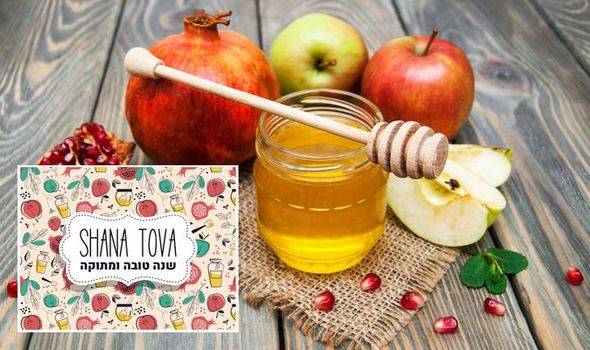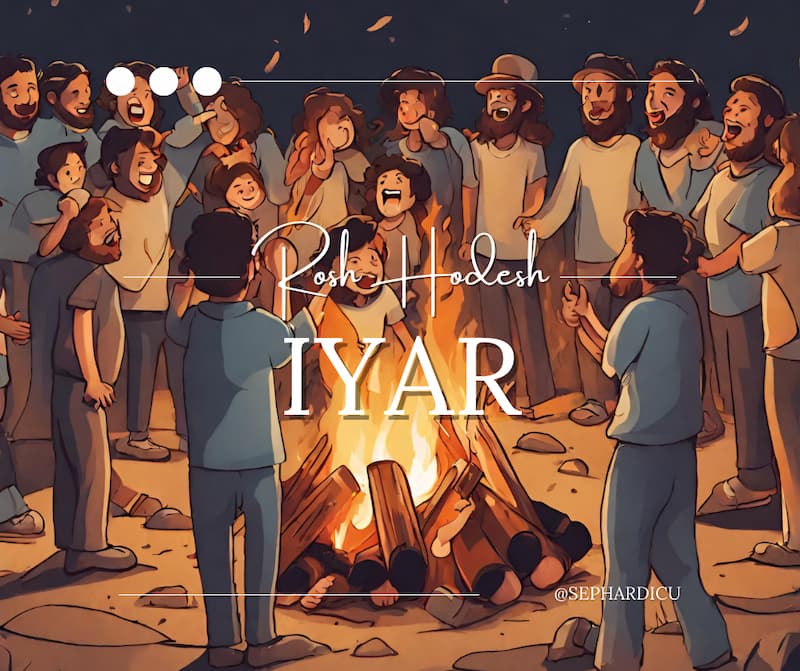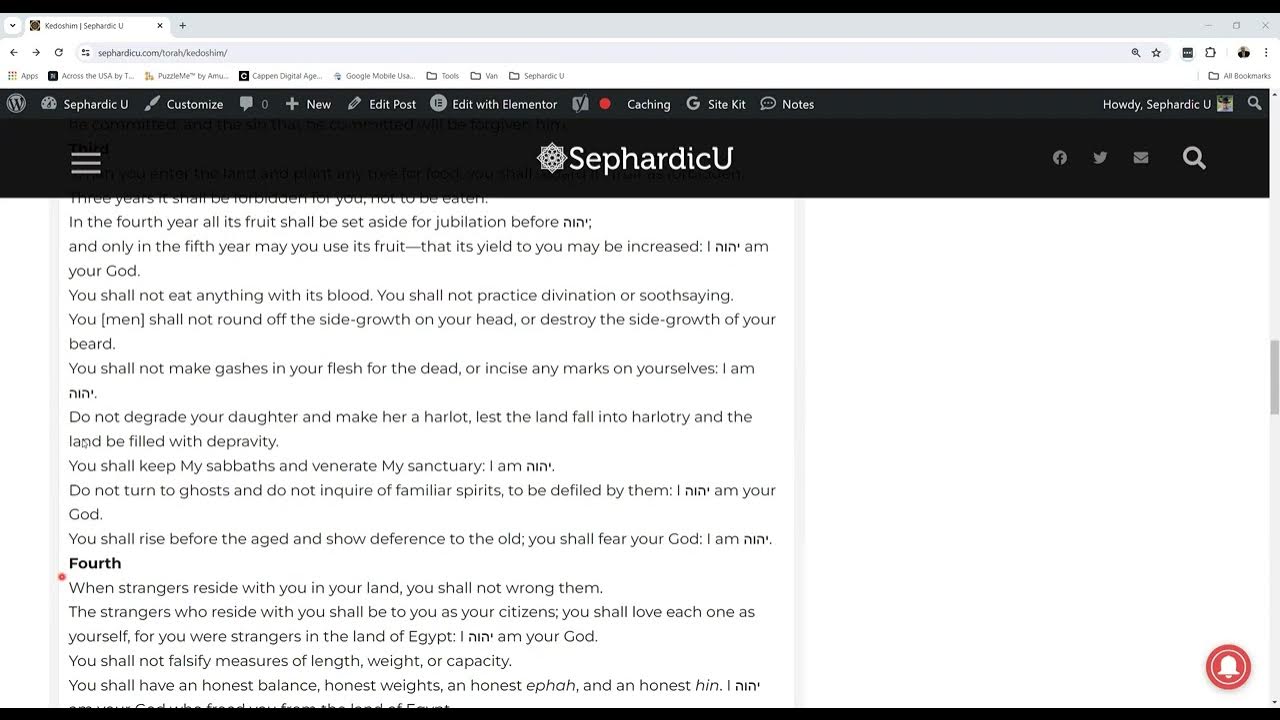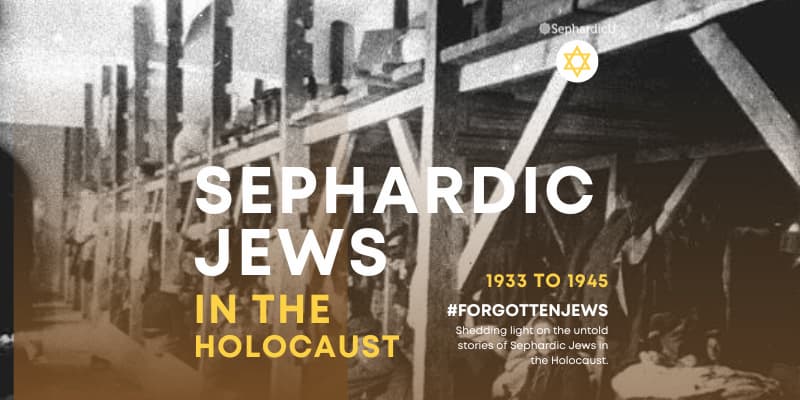Rosh HaShana “Seder” and symbolic actions
- On both nights of Rosh HaShana, it is customary to bring to the table special foods, known as Simanim or symbols. These foods include apple and honey, pomegranate, and dates, among others. There is no need to eat them, and they are rather meant to serve as visual reminders for the things we want to pray for.
- There are several practices as to the place of the Simanim during the meal. They can be eaten after Kiddush as appetizers, during the meal, or after Birkat HaMazon as dessert.
- It is important to remember that the Simanim are only mental aides for our prayer and have no innate influence over our spiritual experience or the year’s outcome.
- For that reason, there are no foods which should not be eaten on Rosh HaShana. The practices which evolved to forbid sour, bitter, or dark-colored foods, are nothing more than a superstition.
- Among the foods “forbidden” on Rosh HaShana are nuts. The reason for the prohibition is very prosaic: nuts and almonds were used as snacks in the synagogue, and they caused people to cough and interrupt the prayer and the sound of the Shofar.
- The Talmud states that if one sleeps on Rosh HaShana, his luck will sleep all year. That statement does not refer to napping or extending one’s sleep past sunrise, but rather to one who chooses to sleep all day, thus losing the spiritual experience and elevation that Rosh HaShana has to offer, and this will affect the nature of the forthcoming year.
Festive Meal
- The festive meal of Rosh HaShana is mentioned in the book of Nehemiah (8:10). As on Shabbat and other holidays, it is what you consider to be festive. It could be fish, dairy, or vegetarian.
Electricity and gas on Yom Tov
There is no prohibition in using electricity on Yom Tov. To the contrary, not using electricity, despite the solid arguments in its favor and Sephardic tradition, might be a fault for diminishing the joy of the holiday. Gas stove can be turned on and off regularly.
Rosh HaShana in Uman
Traveling to the Ukraine to spend the High Holidays at the gravesite of Reb Nachman of Breslev is very inspiring to many. However, Judaism is strongly opposed to worshipping death and gravesites. It is unjustified to spend money to pray in any place, and to suggest that one’s prayer is more readily accepted because he prayed at a certain gravesite borders on paganism.
Additionally, many of the travelers leave their wives and children behind, and while there, they encounter anti-Semitism. The impact of the Uman experience is mostly the result of thousands of people praying together, and this can easily be achieved by gathering in Israel or the US.
Rosh HaShana prayers and Shofar
- The halakha mentions a rule of not eating before blowing the shofar. This refers to the full meal and does not mean that one must fast until after the Shofar is blown. As in Shabbat, one does not have to wait for Kiddush to drink or to have snacks, fruits, or pastries.
- It is therefore recommended to have coffee and refreshments available for the congregants during the long morning prayers.
- In many Sephardic synagogues, there is a custom to auction the Mitzvoth, such as opening the Ark, carrying the Torah, etc. One must remember that there is no price for a mitzvah, and that opening the Ark does not make one automatically wealthy. The real mitzvah is donating money to support the community institutions, which include supporting the poor and needy, promoting education, preserving Jewish tradition and legacy etc. The donation to such causes is acknowledged by honoring the donor with the honor of opening the Ark, for example.
- It therefore stems that rabbis who offer to mention your name when opening the Ark on the High Holidays in return for a donation are misleading the public. They could ask for support and offer a prayer, but are not allowed to insinuate that a blessing at the Ark guarantees income.
- There is a custom in some Sephardic communities to open the Ark at the end of each service, and to recite psalm 24 and a special prayer for sustenance. That prayer contains a reference to the allegedly holy name “dicarnosa”. This part of the prayer should be omitted since praying to holy names is a pagan concept, and since that “holy name” is a foreign implant meant to mock Judaism.
- Caution about foreign implants should also be practiced regarding the special prayers in the Sephardic tradition which are recited during the holidays before taking the Torah out. Those were composed by disciples of Shabbetai Tzevi and incorporated into the siddur by mistake, and they should not be recited.
Shofar sounds
- The minimal number of sounds one must hear, according to Shulhan Arukh, is nine (or ten, depends how you count Shevarim and Teruah). The set is the basic one, TSRT, TST, TRT, or: Teqiah-Shevarim-Teruah-Teqiah, Teqiah-Shevarim-Teqiah, Teqiah-Teruah-Teqiah.
- There is therefore no need to feel stressed if one or more of the sounds of the shofar was missed, or if it sounded unclear. Also, if one is visiting bedridden people, or mothers with babies who could not make it to the synagogue, and has several visits to make, it suffices to use this set.
- When blowing shofar for someone who did not hear shofar yet, the blessings can be recited by either the shofar-blower or the listener, whether man or woman.
- It is better to recite less prayers and rather have time to reflect on them and take them to heart, then keeping at pace with the community. It is told about R. Avraham Yitzhak HaCohen Kook that on Rosh HaShana and Yom Kippur he would only recite the Shema and the Amidah. We are uplifted and inspired by the familiar tunes and the communal singing, and we should also take time to study the prayers and find those which most resonate with us.
Dangers in the synagogue
- We must pay special attention to potential dangers in the synagogue, such as security, health concerns, and hurting others’ feelings.
- Synagogue’s administration should take the necessary steps to provide security during the holidays, and to prepare congregants to respond in case of a terror attack.
- There should be medical kits available and first responders appointed.
- In case of an emergency in the synagogue or at home, do not hesitate to call 911 immediately.
- We should pay attention to those around us, especially the elderly, to make sure they are feeling well. This is especially important on Yom Kippur. It is better to prevent an emergency then attend to someone who has fainted, for example.
- It is also very important to make sure that no one is offended, and that fights do not break over seats, honors, or practices.
Tashlikh
- Another famous and beloved symbolic act of Rosh Hashana is Tashlikh, in which people go to a river or to any water source to shake their sins away. This is a relatively late custom, first mentioned by Polish rabbis of the 16th century. The original custom was to stop by the river (probably the Wisla or Vistula), and recite the verse: ותשליך במצולות ים כל חטאתם – Please cast our sins into the abyss. With time, the practice expanded to more verses, personal prayers, readings from the Zohar, shaking the corners of one’s clothes, requiring fish in the water, and bringing breadcrumbs to feed the fish.
- We can each follow our customs regarding Tashlikh, but we should keep in mind that it is a symbolic act, meant to prompt us to take the necessary steps to change our life, through repentance, reflection, and asking for forgiveness.
Shofar on Elul
The custom to blow the shofar starting at Rosh Hodesh Elul is first mentioned in Pirke deRabbi Eliezer:
On Rosh Hodesh Elul God told Moshe to ascend the mountain [the second time]. They blew Shofar throughout the camp to let people know that Moshe ascended the mountain, so they will not worship idols again… that is why they instituted to blow shofar each year on Rosh Hodesh Elul.
The author cites no sources to support this interpretation of the biblical narrative, and it is later refuted by Nahmanides. He also mentioned the custom as an established law without mentioning who established it. The custom became popular, however, as shown in several anthologies of customs from early medieval times, among them HaManhig. The book, originally called מנהיג בני העולם – the Guide of the People, was written in the 12th century, by R. Avraham bar Nathan HaYarhi, who traveled in Spain, Germany, and France, and was familiar with the various customs. R. Avraham writes that the custom is based on the aforementioned midrash, and adds:
The French do [blow the shofar] from Rosh Hodesh on.
He does not provide the reason for extending the custom from one day to forty, but in Sefer HaRoqeah, written by his contemporary R. Elazar of Worms, we find the one letter which made all the difference: בפרקי דרבי אליעזר נהגו לתקוע מראש חדש אלול וכן המנהג
In Pirke deRabbi Eliezer [it is written] that they had the custom to blow shofar from Rosh Hodesh Elul, and this is our custom.
The original text of the Midrash בראש חודש – on Rosh Hodesh, was somehow transformed throughout the ages into מראש חודש – from Rosh Hodesh.
Once the transition took place, new explanations were provided. I find most interesting the following one, by R. Haim Or Zarua of Vienna (1250-1310):
When the rabbis said that one should learn in order to do, they meant that one should learn well how to fulfil the mitzvah of sukkah or lulav… when one has to talk to the king he reviews his words one, two, and three times… even more so when he faces God… for that reason shofar is blown on Elul, so one will not make a mistake when blowing shofar on Rosh HaShana.
This explanation displays religious anxiety, not much different then OCD. One can practice for blowing shofar on Rosh HaShana privately, for a couple of hours, and there is no need to make it part of the regular ritual. The author also interprets the statement of the rabbis that one should learn in order to do, as saying that one must dedicate time and effort to know the details of the ritual, while it originally meant that the Torah is a guide to practical life and not the focus of abstract learning.
In an anthology of custom by a disciple of Maharam of Rothenberg (1215-1203), a new reason is offered:
This [the midrash] is why the Sages instituted blowing the shofar on Rosh Hodesh Elul each year and throughout the month, to warn the people to repent… and to confuse Satan, and so is the custom in Germany to blow shofar every morning and evening following prayers.
At this stage, the custom is referred to as one established by the Sages, a term used to describe the rabbis of Mishnaic period. Elevating a halakha or a custom to higher level of authority is a common phenomenon in Halakhic literature, and one should carefully research sources to find out when and by whom they were indeed established. The author also suggests that by blowing shofar on dates other than Rosh HaShana, we confuse the Saran and he does not know when to press charges against us. This is a distortion of a Talmudic statement which spoke of the shofar of Rosh Hashana itself. The meaning of the Talmudic passage is that the shofar prompts people to repent, and thus undermines the arguments of the divine prosecutor against us. In medieval Germany, however, Satan became an independent entity, and Jews must devise tactics to fail him. The argument that Satan is confused by shofar of Elul is intriguing and amusing, and one should ask how long it takes Satan to figure out our schedule. Wouldn’t he know by now that he should count 30 days from the first Shofar blowing to get to Rosh HaSHana?
The custom was eventually legislated into binding Halakha by Rabbenu Yaakov in Tur Orah Haim, and was later adopted by many Sephardic communities.
Shana Tova uMetuka
Ref:
1 A Midrashic work from the 8 th or 9 th century, which was attributed to a sage who lived in the 2 nd century. פרקי דרבי אליעזר, פרק מו:
בר”ח אלול אמר הקדוש ברוך הוא למשה עלה אלי ההרה והעבירו שופר בכל המחנה שהרי משה עלה להר ואל יתעו עוד
ישראל אחר עבודה זרה… לכן התקינו לתקוע בר”ח אלול בכל שנה ושנה
2 ספר המנהיג, הלכות ראש השנה: יש לי סמך לדבר בפרקי ר’ אליעזר… והצרפתים עושים אף משם ואילך
3 ספר הרוקח הלכות תשעה באב סימן שי
4 דרשות מהר”ח אור זרוע, סימן לג: וזהו שאמרו חכמים הלומד על מנת לעשות כגון שמשים דעתו היאך לעשות לולב או סוכה כהילכתן, ורואה דברי המורים
הילכתן ומדקדק בדברים ל’ יום קודם הרגל ונותן לבו ביראת הש’ ובמצותיו… אדם שיש לו עסק בפני מלך בשר ודם הוגה בעסקו ועוסק ושונה ושולש כדי
שיהא מרגלא בפומיה ולא יכשל בלשונו קודם שיבוא לפני המלך, לכך נהגו העולם לתקוע כל חדש אלול כדי שיהא רגיל בתקיעה ולא יטעה
5 ספר מנהגים דבי מהר”ם, סדר רינוס לערב ר”ה: שלא ירגיש [השטן] מתי יהא ר”ה ומהאי טעמ’ אין מזכירין ר”ח בשבת שלפניו
6 טור אורח חיים, הלכות ראש השנה, סימן תקפא









